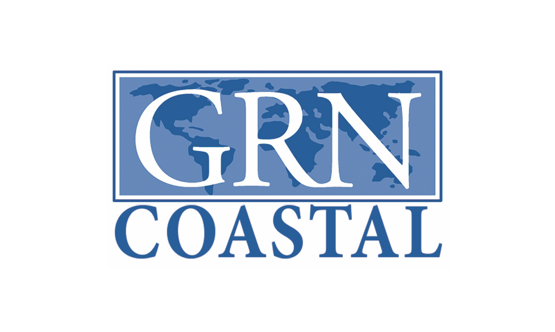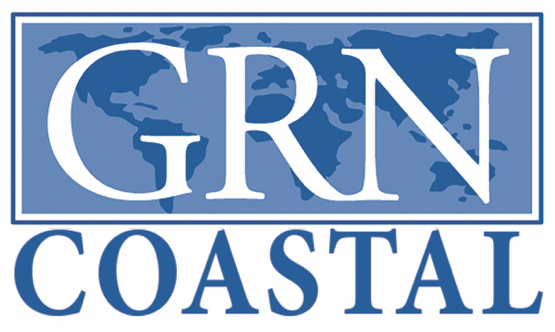It costs a lot of money to bring on a new salesperson by Frank Hurte
From time to time, GRN Coastal invites key industry leaders to share their thoughts on important topics in Wholesale Distribution. This issue we feature Frank Hurte. Frank is an industry veteran, association contributor, author and a thought leader. Below he shares his insight on the evolving role of the new sales hire.
Eleven years ago, research by industry consultant Brent Grover indicated the typical distributor invested over $150,000 before a salesperson started generating profit for the company. I found the number eye-opening, so I wrote several articles urging distributors to invest time in creating a real onboarding plan for new sellers. Not much happened.
The more I thought about the topic, the more it bothered me. Digging a bit further into the topic, I discovered angst created by new sellers and their managers based on elementary things like expense reports, office hours, sales meetings, and believe it or not, work-related dress codes. Most distributors did not take or make the time to create expectations for activities large or small. For example, some new sellers were surprised when told they needed to submit CRM reports. For others, the term “sales call” was never properly defined. The need for “after-hours” work came as a shock and, in a couple of instances, it caused promising new sellers to leave for different industries.
We find ourselves in a precarious situation.
While that new guy is out there struggling to figure things out, we are struggling to figure out why a promising guy is not creating sales opportunities. The meter is running, and we are burning through cash like a runaway forest fire. In good times, distributor management simply looks the other way while increased revenues cover the dollar drains. In economic slowdowns, the money is sorely missed but viewed as “the cost of doing business” when getting a new seller launched.
The expenditures are going up faster than our gross margin dollars. Reports from distributors around the country point to a marked increase in employee costs since the onset of COVID and the inflation that followed. It is easy to justify a recalculation of that $150,000 laid out by Mr. Grover. The inflation calculator at www.calculator.net tells us that 2013’s $150K is worth $202,227 as of May 2024. This number may be closer to a cool quarter million based on the cost of hiring qualified people and expenses tied to business vehicles.
A quarter million investment in a new salesperson is a lot of money…
Let’s explore three assumptions:
- Distributors need new salespeople. Despite all the breakthroughs in distributor-centric e-commerce and marketing technologies, knowledge-based distributors still need someone capable of growing relationships, adding value, and building sales volume with key customers.
- Experienced salespeople are in short supply. The demographic picture of the sales teams across our industry shows many sellers are rapidly closing in on retirement. Your sales force will soon be easing into retirement and the candidates available from other companies will be fewer than just a decade ago.
- Most distributors do not have a well-developed plan for bringing on new sellers. Over the years, most distributors have used the same approach to developing new salespeople: a few weeks in the warehouse, a month sitting with someone in the inside sales group, a couple of days with an experienced seller, and then tossed out with the mission of making lots of sales calls and growing business. We will call this process “the school of hard knocks.”
The school of hard knocks comes with a hefty price tag.
If you hire someone with the right intellect, personality, and drive there is a good chance they will eventually figure things out and become a profit generator for your company. However, just like taking five years to graduate from college, the longer it takes the new seller to become a competent seller, the greater the cost.
Again, using our collegiate analogy, if a student becomes frustrated and leaves after two years at college, the tuition is lost. Hire a great new person and have them leave mid-way through their “hard knocks” training and your company has lost much money and valuable time with customers. In our research into the topic of new salespeople, this scenario surfaced many times. Sad.
Mentoring isn’t a good substitute for training.
When questioned about sales training for new sellers, most distributor leaders claim they pass along training by way of informal mentoring. While the plan sounds good, problems creep in because the mentoring is neither well-structured nor closely monitored. Typically, the experienced person, either a senior salesperson or sales manager, gives their charge insights into their world when they need to direct the actions of the new seller.
The problem is the new seller faces unique challenges never faced by the senior colleague. For example, an experienced seller rarely struggles to set up first-time customer meetings. Nor do they face the daunting task of learning how to maneuver through the thousands of products sold by their company.
Dwelling on the issue of these first meetings, the new seller most likely came into the industry when customers were more courteous and understanding of a new seller’s position. In today’s environment, most customers are not as open, if at all, to sellers simply stopping by to introduce their company or share catalogs.
New sellers struggle to get through bypass voicemail and make human contact with customers. When they do get a customer on the phone, the rookie seller struggles with the right words. Referring to our comments on customers not being keen to see a new salesperson, he or she comes across as a “bumbling new salesman” and is given short shrift by the customer and not invited in for an appointment.
Introducing The New Sales Guy Project.
Five years ago, a client asked me if I could recommend a good book to help guide his latest hire in their quest to become a salesperson. Searching through the many books on the market, I could find nothing suitable for a distributor salesperson launching into the world of knowledge-based distribution. I offered to assist on a one-on-one basis to see if I could help. In short order, I found myself coaching four additional new sellers and discovered they all had similar issues.
I opened myself up to even more new sellers to understand their problems. After working individually with over 200 souls who had one thing in common, less than one year in sales, I saw several undeniable trending challenges.
Our kind of selling is different.
Our kind of selling is a continuous stream of interactions. The distributor and their customers build ongoing relationships that determine business levels over decades. An interaction today that doesn’t result in a purchase order could position the distributor for tens of thousands of dollars in the future.
But the relationship must start somewhere. A poor start for a new seller today could impact business opportunities for years. Yet, distributors lack the resources to make the launch work properly. There is a solution.
The New Sales Guy Project.
My new book was born out of real-world problems facing distributor salespeople in the knowledge-based distribution space. Each of the techniques outlined has been tested through our work done with over 200 new sellers, and further proven via the successful launching of new sales careers by those who purchased the book and participated in our exclusive small group training sessions.
The investment in new salespeople is big – a quarter million dollars big. Time is everything. Shortening the time required for a new person to move from expense to profit generator reduces the investment. Using the process laid out in the book can shorten the time to effective selling by a year.
The New Sales Guy Project book can be purchased on Amazon or here:
https://thedistributorchannel.blogspot.com/p/franks-books.html
You can reach out to Frank Hurte at: frank@riverheightsconsulting.com








